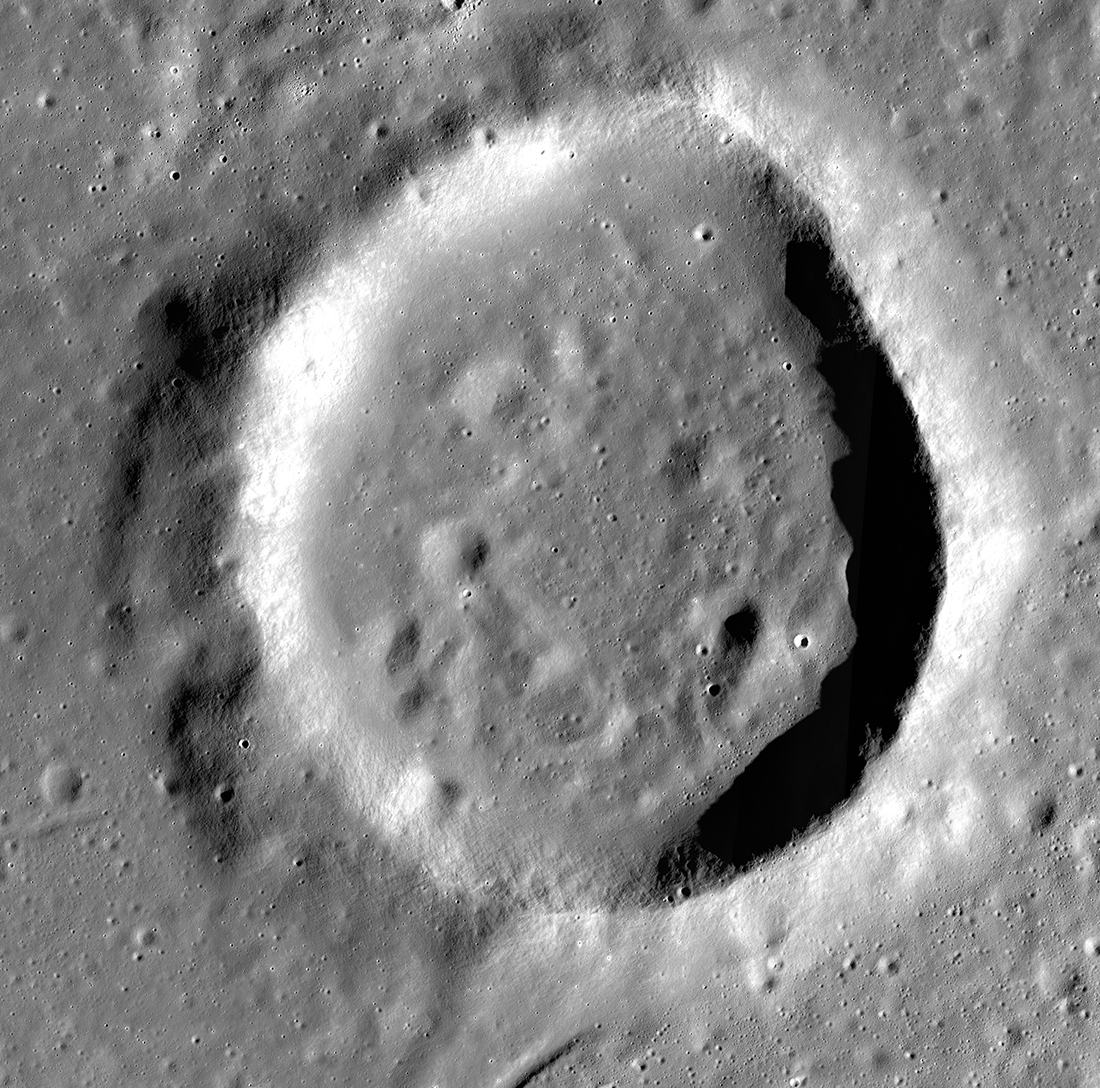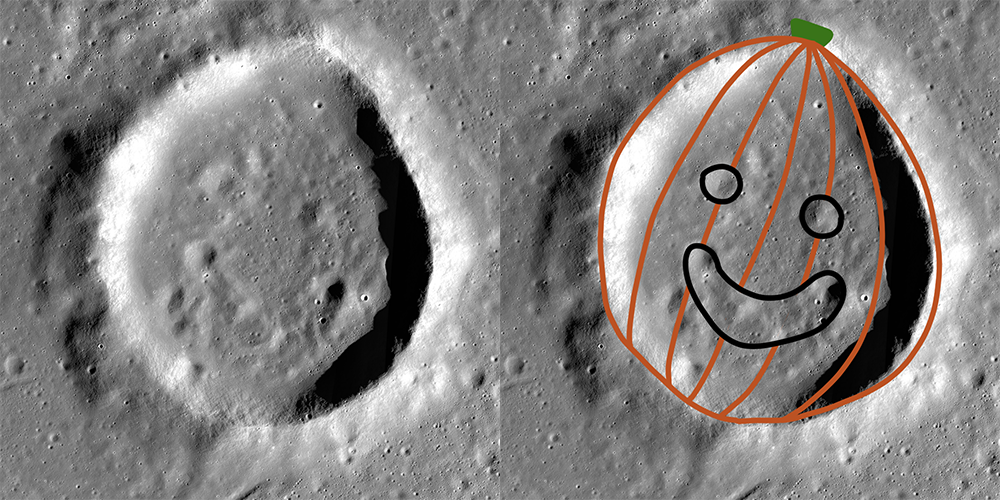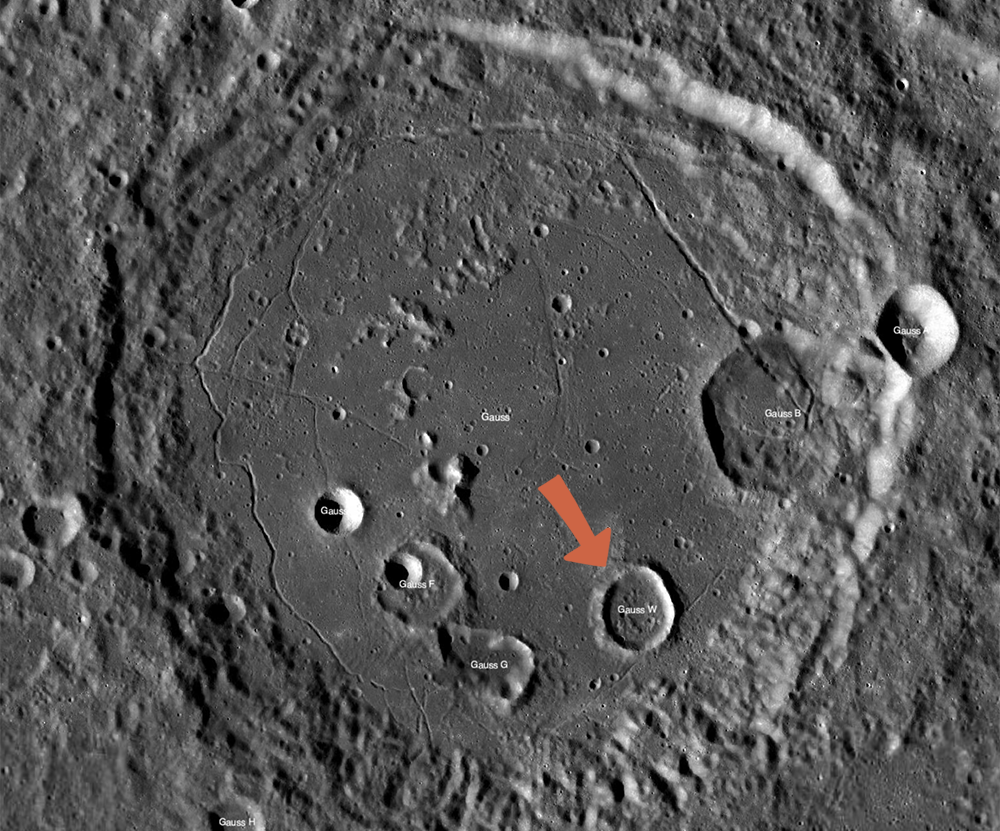
Just in time for Halloween, our newest featured image shows us something spooky! Does this crater remind you of a jack-o'-lantern? Gauss W has some unique features on its floor that look like a face carved out of a pumpkin (and if you don't see it, we've helped you out below). Gauss W is a part of a collection of craters on the far side of the Moon (all near 80° E, 34° N) named for the German mathematician, Karl Friedrich Gauss.

This jack-o'-crater is located at the base of the larger Gauss crater. Reaching over 170 km in diameter with its terraced walls and flat floor crisscrossed by several fractures, Gauss is considered to be a floor-fractured crater. Floor-fractured craters formed when magma intruded into the crust, thereby uplifting and fracturing the crater. In the interior of Gauss crater there many smaller craters, including Gauss W, where we find our smiling face!

Gauss W has a rough, lumpy floor compared to many craters of a similar size. Upon first glance it might appear that our jack-o'-crater is made entirely of smaller craters, however a simple lighting trick can help us analyze this image even better. When we take a quick glance at the rim of Gauss W, you can see a shadow of the rim on the right-hand side. This tells us that the sunlight is coming from the right as well. Each crater should have similar lighting conditions, with a shadow of their rim cast on the right side. But take a look at the right eye of the face – its shadow is on the left side of the feature. This tells us that the feature here is not a concave crater, but a convex mound! This lumpy texture is common for craters that have been modified by volcanic activity.
On Halloween night when the full Moon is shining bright, remember that it's celebrating too!
Learn more about floor-fractured and other volcanically modified craters!
Modified Craters of Moscoviense
The fractured floor of Compton
Do you want to download these images for yourself?
Interested in learning more about controlled mosaics? Check this out Feature Mosaics: Behind the Seams
Published by Alyssa Bailey on 29 October 2020